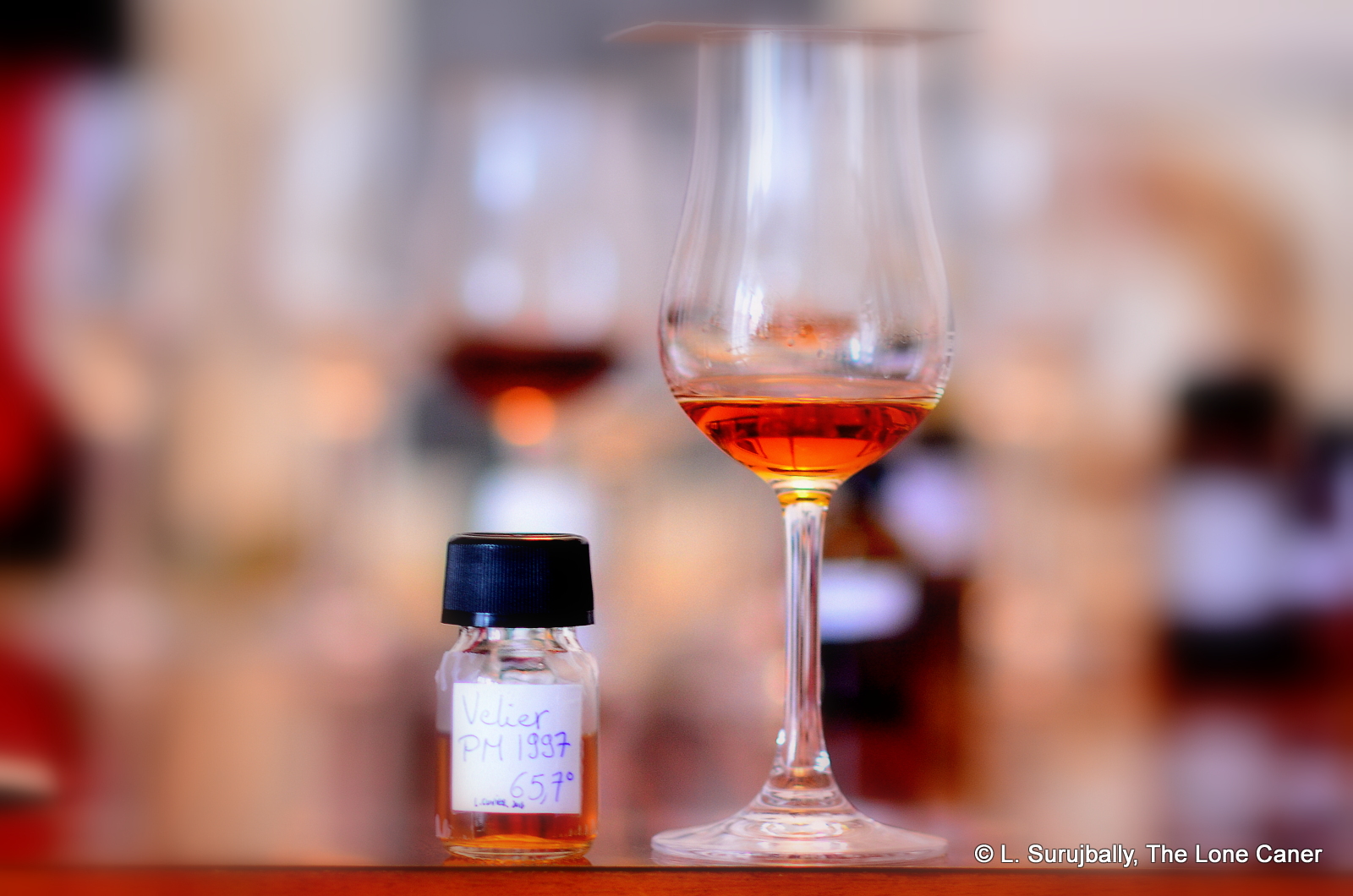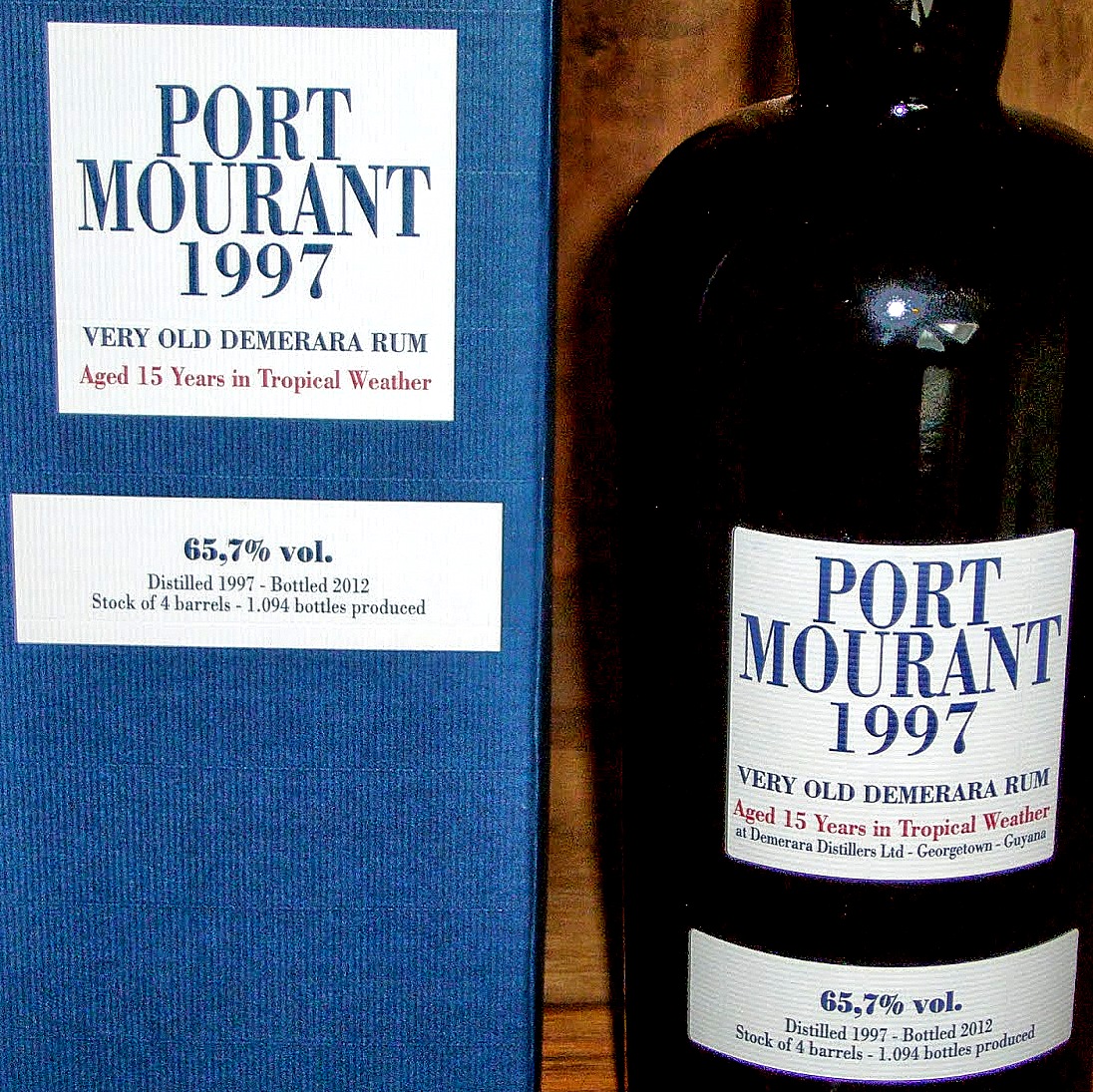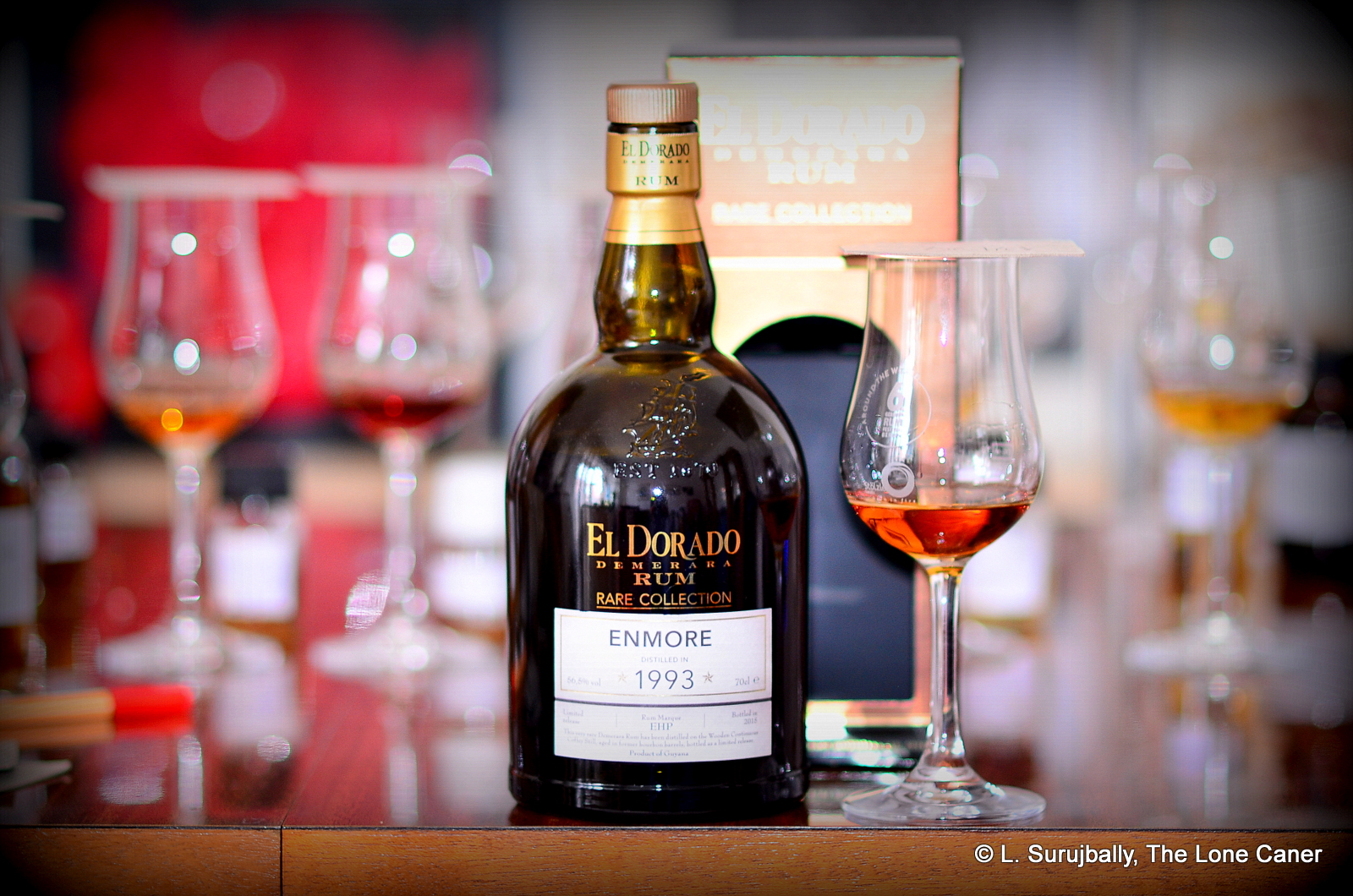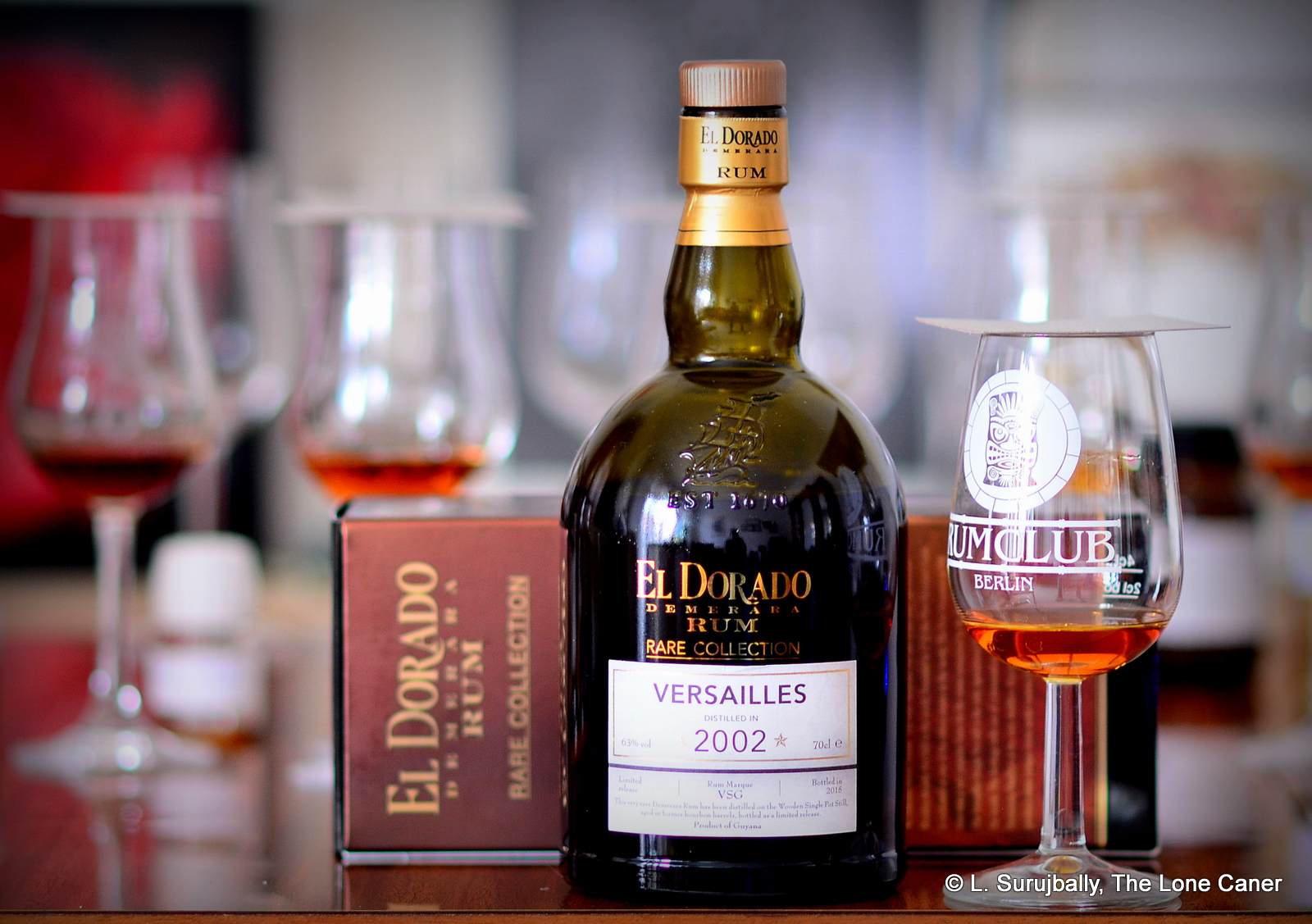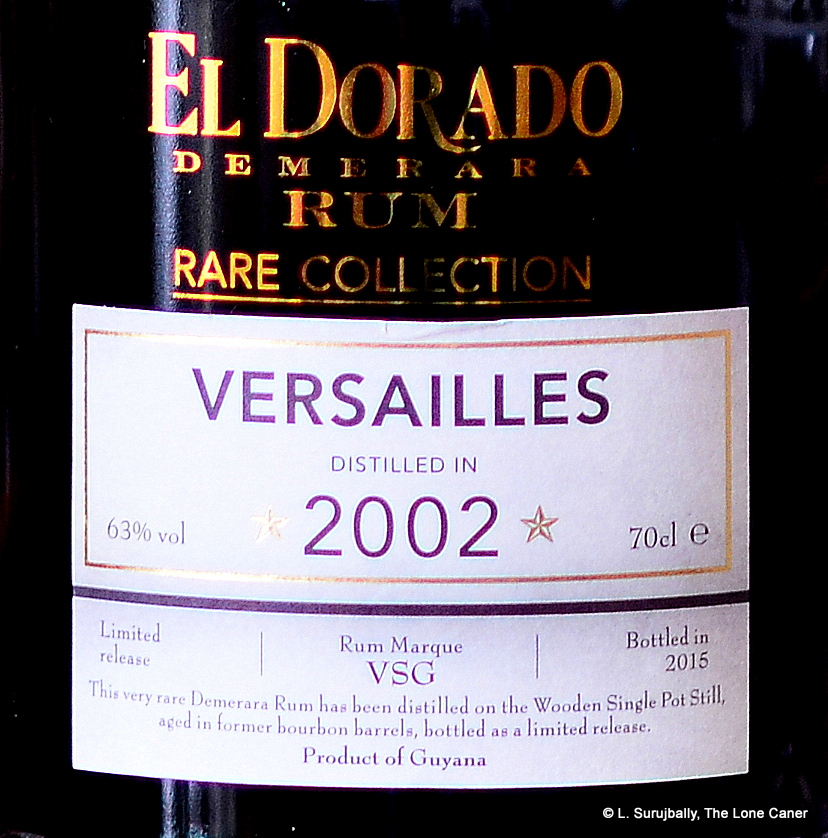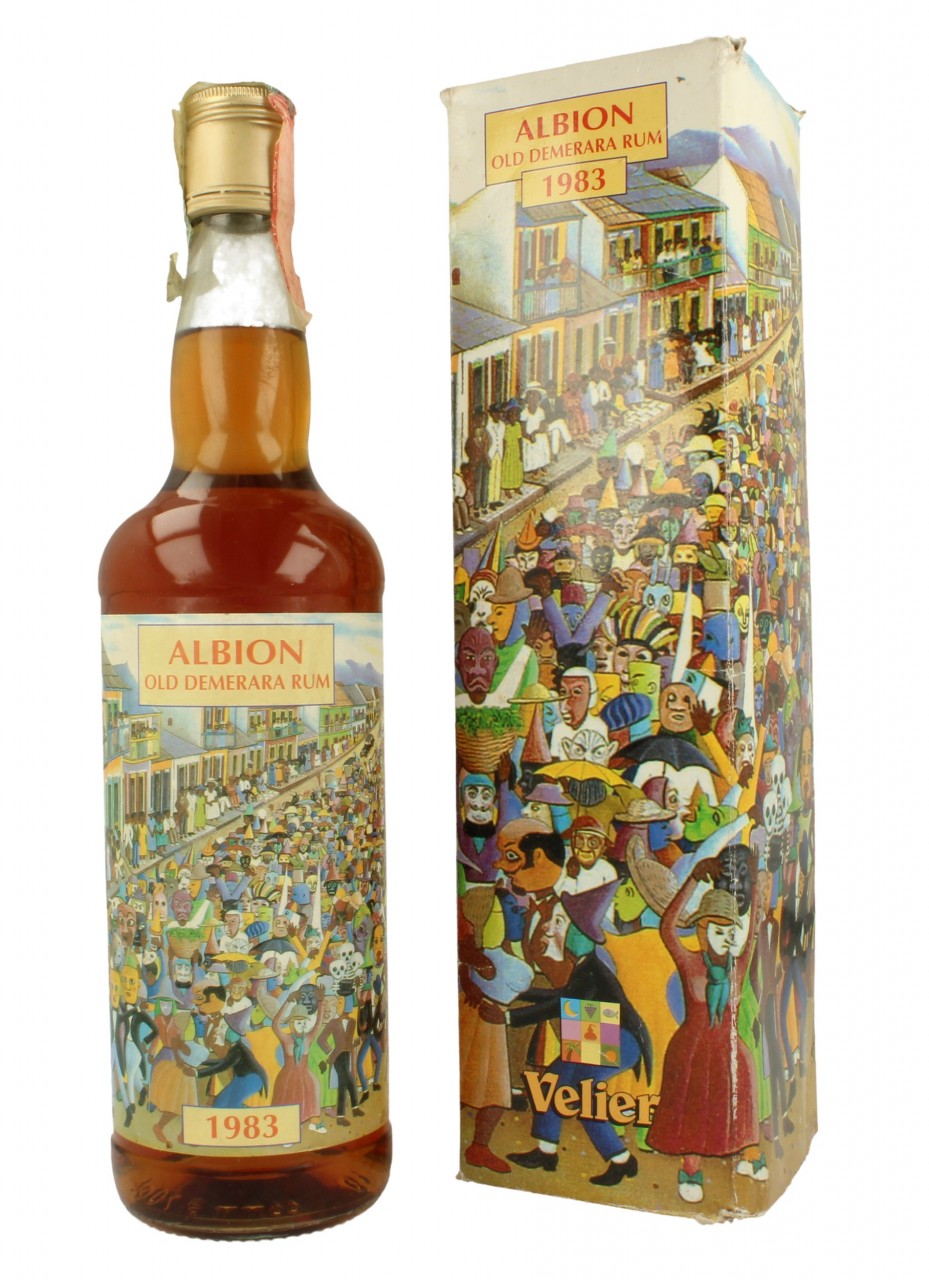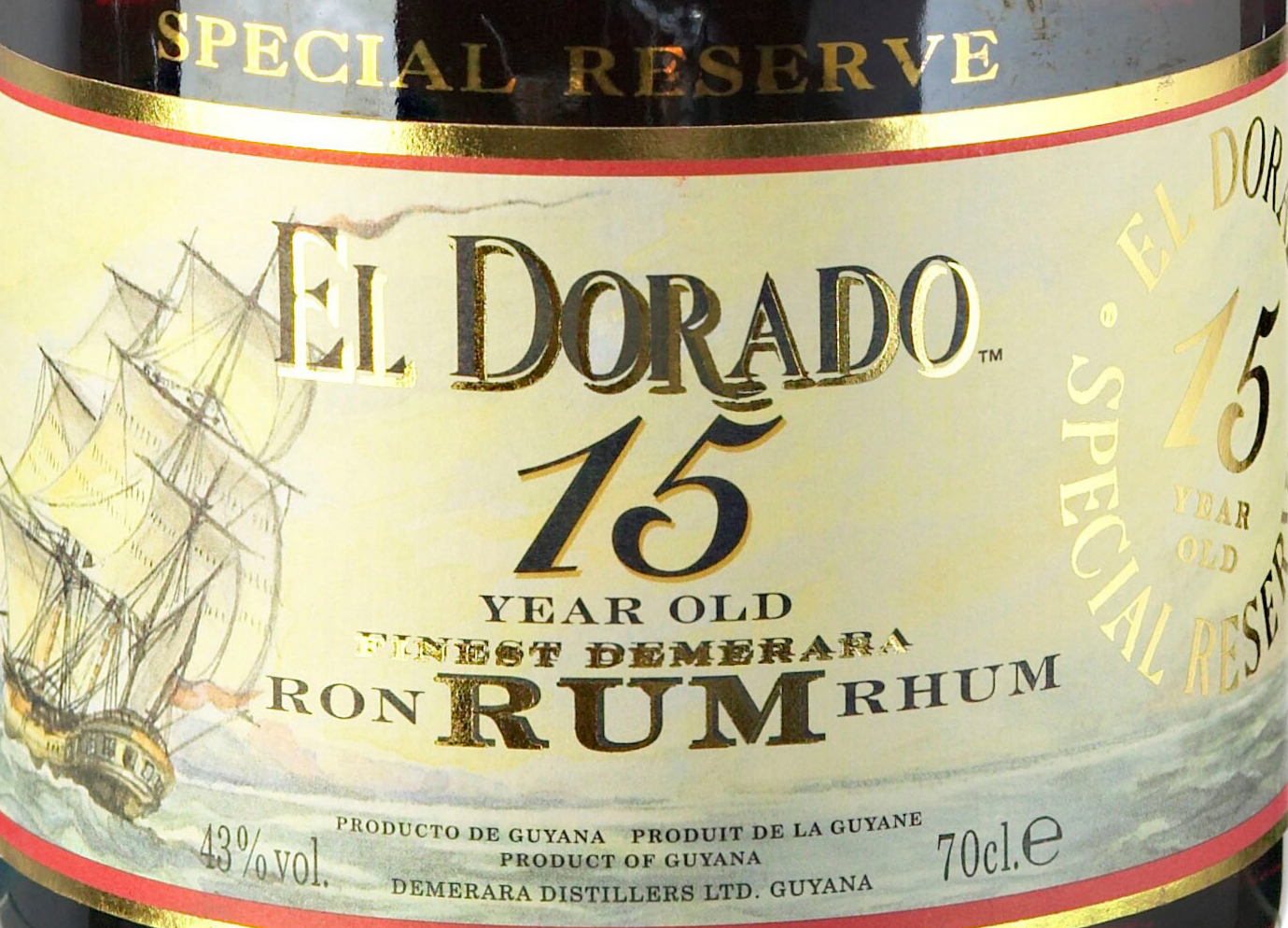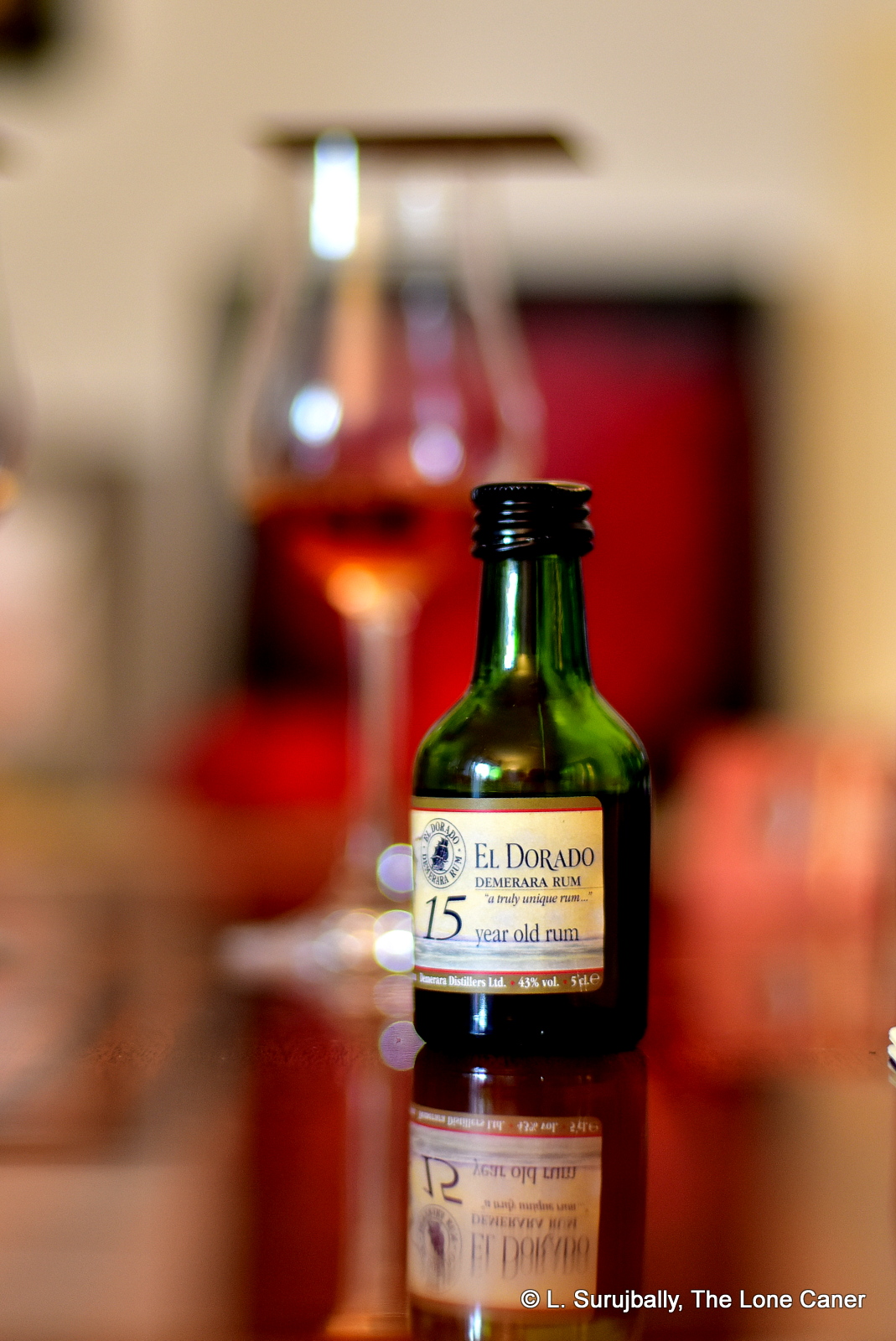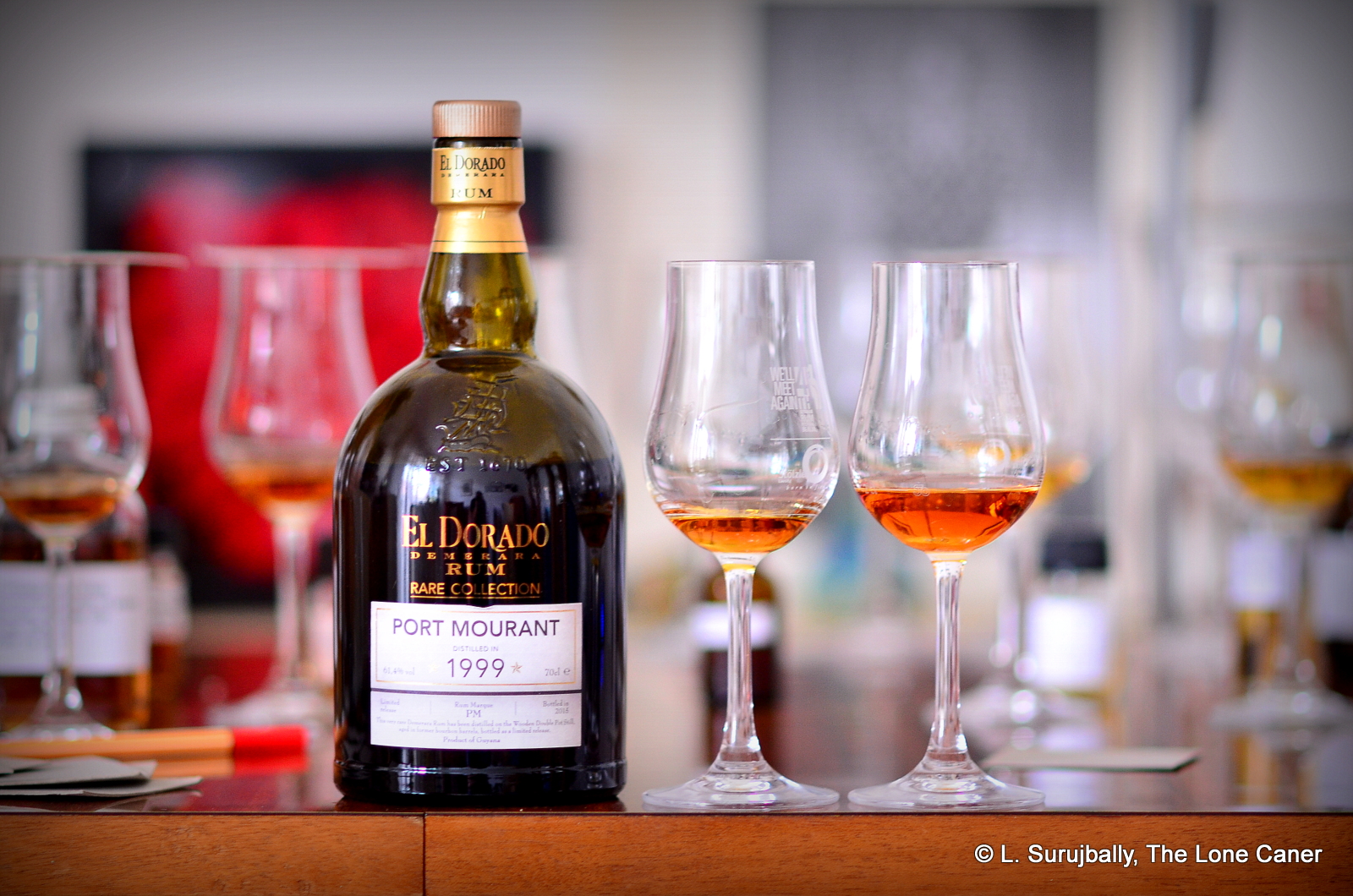
#498
By the time we get to the third Rare Collection rum issued by DDL to the market in early 2016, we have to move on from our preconceived notions of how these rums were issued: okay, so they booted Luca out and us rum junkies were pissed, but from a purely business perspective, perhaps we should have seen it coming. And anyway, the world didn’t come to an end, did it? Life continued, taxes got paid, rums got drunk, and civilization endured. Time to move on. It was surely nothing personal, just business, caro amico. Lo capisci, vero?
Which brings us to the Port Mourant 1999, which some say is a fifteen year old and I say is sixteen (just because of the years), bottled at ferocious 61.4% ABV, and deriving from the double wooden pot still which produces (along with the Enmore wooden Coffey still) what I think are the best Guyanese rums available. You’ll forgive me for mentioning that my hopes were high here. Especially since I never entirely got over my feeling that it cost too much, so for that price, I wanted it to be damned good.
For a sixteen year old (or fifteen, if others write-ups are to be taken) made from one of my favourite stills, I felt it was remarkably light and clear for a Port Mourant, and even this early in the assessment, dominated by the sharpness of tannins that had been left to go nuts by themselves for far too long. It was dry and leathery on the nose and, as for both the Enmore 1993 and particularly the Versailles 2002, my personal feeling was and remains that the oak had too much of an influence here – the rum equivalent of sucking on a lemon. Fortunately, this calmed down after a while and allowed other aromas to be sensed: lemon peel, raisins, pears, black cherries, an olive or three, cloves, freshly sawn lumber, a little brine, and lastly those dense, solid anise and licorice notes that basically danced with the oak and took over the show from there on forwards.
The copper coloured rum was surprisingly citrus-forward when tasted, a little sweet and quite dry on the first sip. Also musky, with leather and smoke and wooden tannins, very assertive, lots of oomph – it really needed some water to bring it back down to earth. With that added, the fruitiness came to the fore – tart green apples, cherries, pears, red guavas, raisins, plus of course the solid notes of licorice. It really was a bit too much though – too sharp and too tannic, and here I truly felt that it could have been toned down a shade and provided a better result. The finish, though – long, warm, dry, redolent of licorice, hot black unsweetened tea and lighter fruity nuances – was quite good, for all of the concussive nature of what went before.
Looking at The PM 1999 in conjunction with the other two, I’d suggest this was not one of my all-time favourite expressions from the still…the ever-present oakiness was something of a downer, and the lack of real depth, that aridity and bite, kind of derailed the experience, in spite of the redeeming fruitiness and intense heat that normally would earn my favour. I can’t entirely dismiss it as a lesser effort, or even a failure, because it isn’t, not really – too much still went right (the intensity gave as much as it took away). It’s just that if DDL wanted to own the Demeraras, they dropped the ball with this one. Partly that’s because the Port Mourant and Enmore profiles are so well known and endlessly revisited by all and sundry, so deficiencies are more clearly (and more quickly) noted and argued over; and the real stars shine right from the get-go, and are known. But for me it’s also partly because there’s better out there and in fine, I guess I just have to wait until the next releases come my way, because for its price, this is not one of the better PMs in the rumiverse. I wish it were otherwise, but it just isn’t.
(83/100)
Summing up the First Release of the Rare Collection
Overall, I think that DDL — in this First Release — captured the spirit of the Velier Demeraras quite well without entirely ascending to their quality. Yet for all that qualification, against the indie competition they hold up well, and if they are batting against a behemoth, well, I call that teething pains.
Keep in mind that not all the Velier’s were stratospheric scorers like the UF30E, the Skeldon 1973 or the PM 1972 and PM 1974: there were variations in quality and assessment even for this company. But perhaps more than any other currently fashionable independent bottler, or the ones that preceded it, Velier placed full proof Demeraras squarely on the map by issuing as many as they did, with many of them being singular deep dives into tiny Guyanese marques nobody else ever bothered with, like Blairmont, LBI, Albion. Which is not a niche I see DDL wanting to explore yet, to our detriment.
What this situation created for DDL was a conceptual competitor for their own single barrel or full proof rum lines like the Rares, which perhaps nobody could have lived up to right off the bat. Yet I submit that Serge’s glowing review of the VSG (90 points) and the FatRumPirate’s satisfaction with the Enmore (5 stars out of 5), as well as my own reviews of the three, gave DDL all the street cred it needed as an inheritor of the Demerara full proof lines. Say what you will, they’re good rums. DDL has shown they can do it. Perhaps they’re lacking only the global mindshare to sell better, perhaps a more stringent quality review…and maybe for the halcyon memories of the Demeraras Velier made before to fade a little in people’s fond remembrances.
Reading around, it’s instructive to see how popular the El Dorado series is, with what genuine anticipation the Rares were awaited, even when prematurely announced. People might have been miffed at DDL’s strategy and the relatively high prices, but they were willing to cut DDL a huge break…and for evidence of that, think about this: when was the last time you saw so many reviewers review all three of a new rums’ issue, all within months of them coming out? Aside from the current Foursquare and Velier releases, that was well-nigh unprecedented.
And if, as has been bruited about, the second release is better than the first, then while we may no longer be living in a Golden Age of full proof Demeraras, well, perhaps we’re living in a highly burnished Silver one which may with luck become aurus in its own good time. We can certainly hope that this will turn out to be the case. In which case both DDL and the buying public will be well served.
Lastly, for some perspectives on the PM 1999 from the other writers out there: all the big guns have written about it by now so….
- WhiskyFun scored it 82, remarking on its oak-forward nature
- RumCorner felt it was only worth 79
- Barrel Aged Mind rated it at 82, and called it “burned”, suggesting the use of charred casks may have been partly responsible.
- The Fat Rum Pirate called it “a big flavourful menace” and gave it 3.5 stars out of 5
- The RumShopBoy gave it 54/100, which could roughly equate to around 80-82 points on a Parker scale, and thought it could have been issued at a lower ABV. He really didn’t like the price.
- Cyril of DuRhum also weighed in with a dismissive 83 points, thinking that something was missing and it was bitter, with less balance.
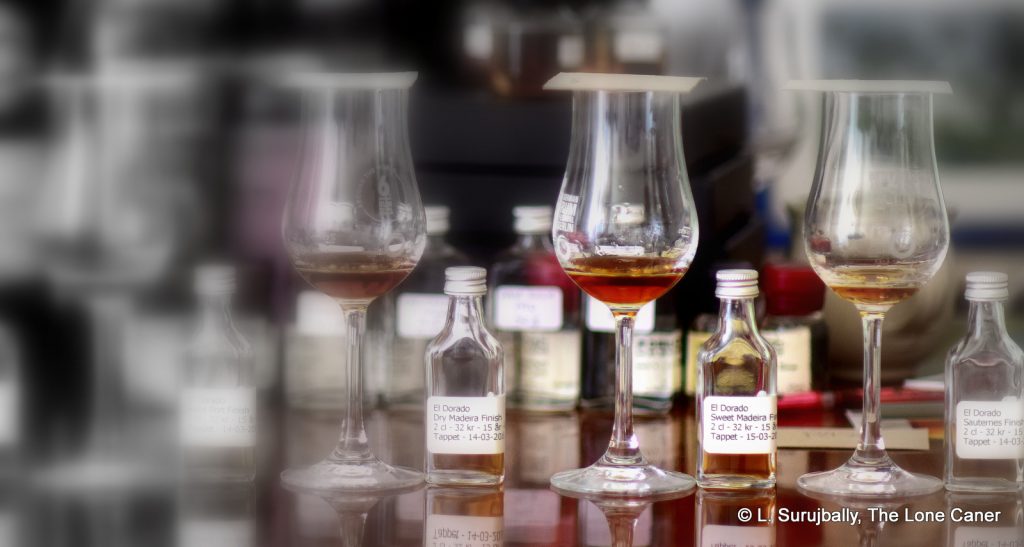
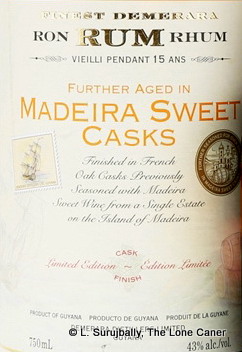 Nose – Leaving aside a slight sweetish note (which I suppose is to be expected, though still not entirely welcome), it noses relatively darker and richer and fruitier than just about all the others except the “Dry”…within the limits of its strength and mild adulteration. Peaches, raisins, cinnamon, cloves, caramel, peanut butter, cherries in syrup and candied oranges, even a little bitter chocolate. It’s all rather delicate, but quite pleasant.
Nose – Leaving aside a slight sweetish note (which I suppose is to be expected, though still not entirely welcome), it noses relatively darker and richer and fruitier than just about all the others except the “Dry”…within the limits of its strength and mild adulteration. Peaches, raisins, cinnamon, cloves, caramel, peanut butter, cherries in syrup and candied oranges, even a little bitter chocolate. It’s all rather delicate, but quite pleasant.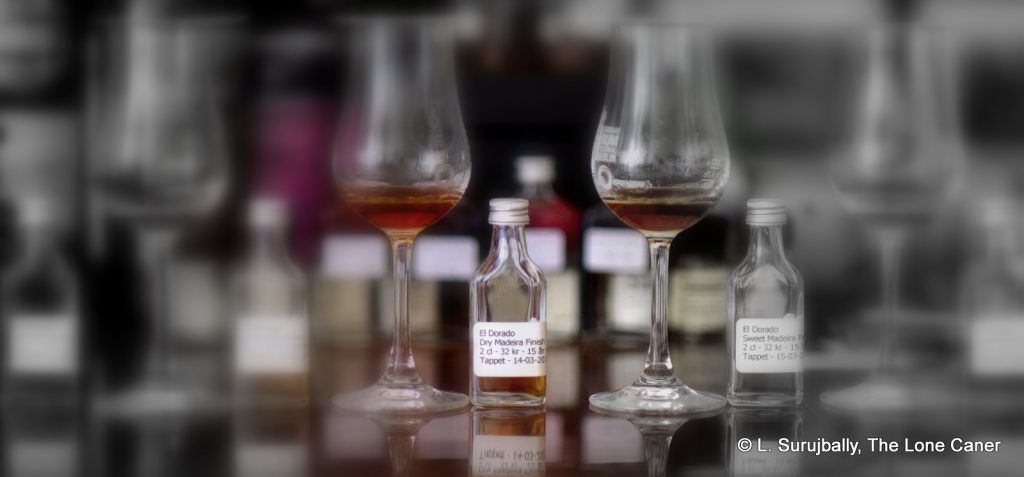
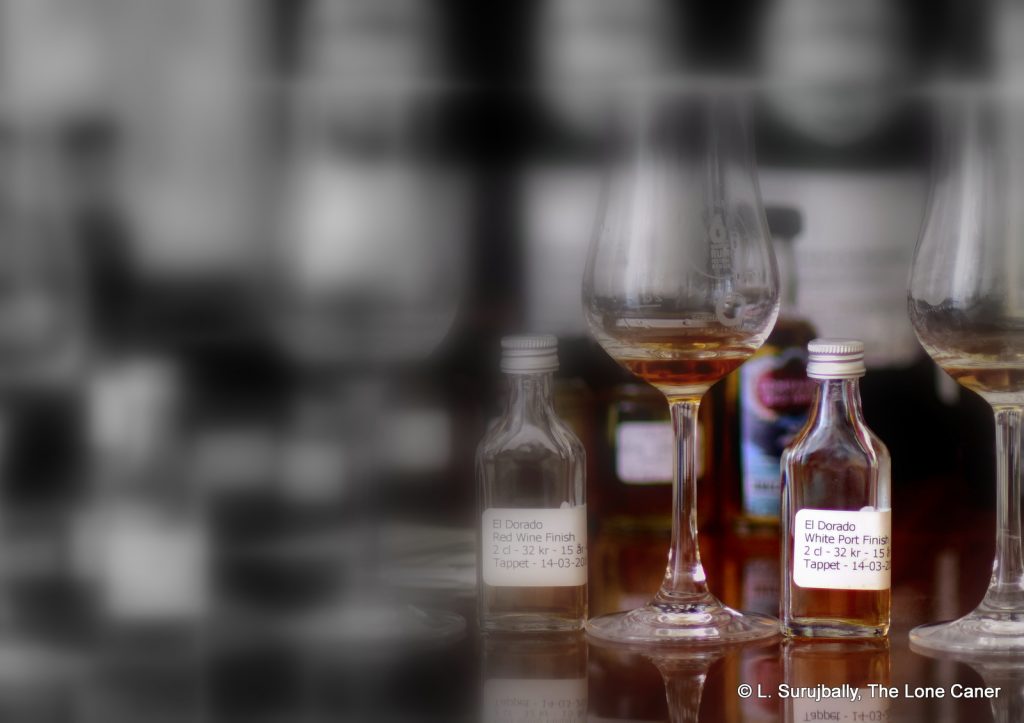
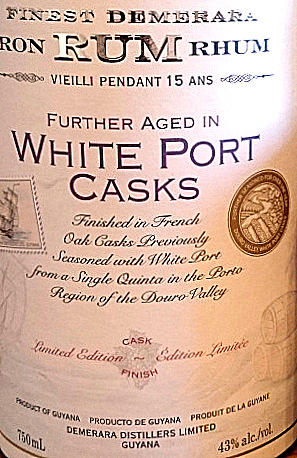 Nose – At first there didn’t seem to be much of anything there, it was so mild as to be lightly flavoured alcohol. But after some minutes it got into gear and revved up some, with a solid core of light brown sugar, molasses, salt caramel, some sweet soya. Not much deep fruitiness here, just light grapefruit, bananas and nuttiness, and sweet white chocolate.
Nose – At first there didn’t seem to be much of anything there, it was so mild as to be lightly flavoured alcohol. But after some minutes it got into gear and revved up some, with a solid core of light brown sugar, molasses, salt caramel, some sweet soya. Not much deep fruitiness here, just light grapefruit, bananas and nuttiness, and sweet white chocolate.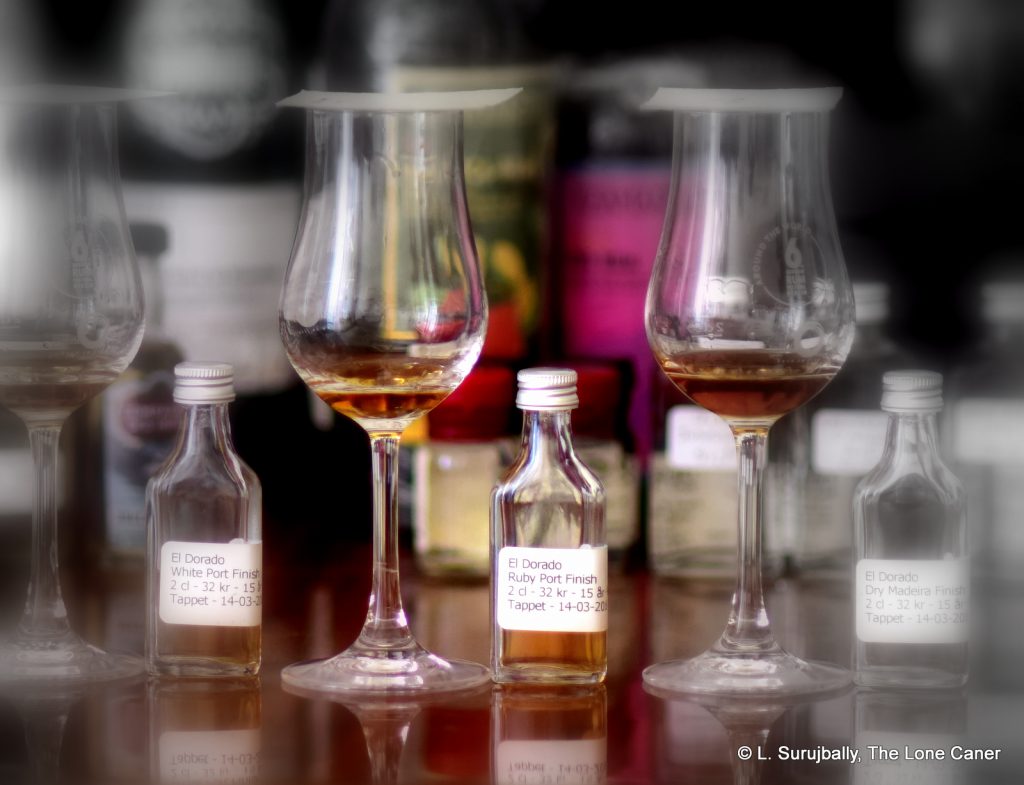
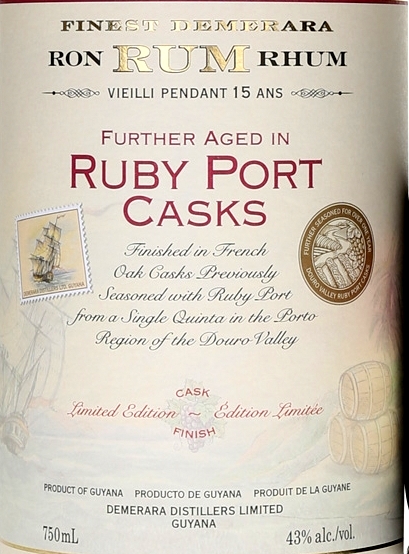 Nose – This has a light, sweet, almost delicate series of smells. There are acetones, flowers and some faint medicinal, varnish and glue aromas floating around (I liked those – they added something different), and initially the rum noses as surprisingly dry (another point I enjoyed). These then morph gradually into a more fruity melange – tinned cherries in syrup, ripe pears, pineapples, watermelons – while remaining quite crisp. It also hinted at salted caramel, crunchy peanut butter, breakfast spices and a little brine, and the balance among all these seemingly competing elements is handled really well.
Nose – This has a light, sweet, almost delicate series of smells. There are acetones, flowers and some faint medicinal, varnish and glue aromas floating around (I liked those – they added something different), and initially the rum noses as surprisingly dry (another point I enjoyed). These then morph gradually into a more fruity melange – tinned cherries in syrup, ripe pears, pineapples, watermelons – while remaining quite crisp. It also hinted at salted caramel, crunchy peanut butter, breakfast spices and a little brine, and the balance among all these seemingly competing elements is handled really well.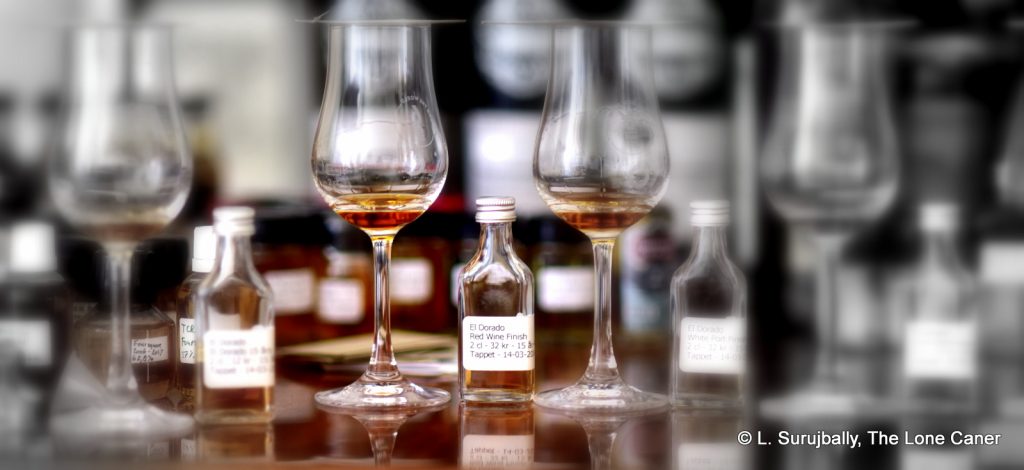
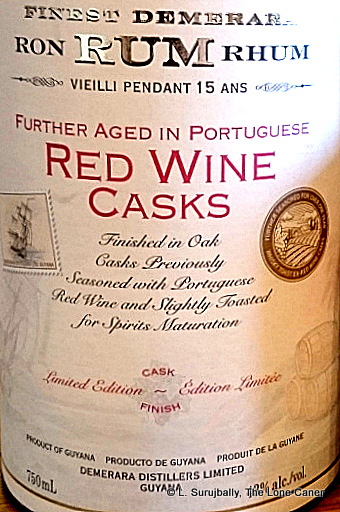 Nose – Somewhat dry and redolent of sawdust, accompanied by delicate flowers an acetones. Quite solid and lightly sweet, and deserves to be left to stand for a while, because after some minutes the molasses, caramel and light licorice notes characteristic of the line begin to make themselves felt, and are then in their turn dethroned by a deep fruitiness of ripe cherries, blackcurrants, plums, raisins and black grapes almost ready to spoil. In the background there’s some leather and citrus, neither strong enough to make any kind of serious impression.
Nose – Somewhat dry and redolent of sawdust, accompanied by delicate flowers an acetones. Quite solid and lightly sweet, and deserves to be left to stand for a while, because after some minutes the molasses, caramel and light licorice notes characteristic of the line begin to make themselves felt, and are then in their turn dethroned by a deep fruitiness of ripe cherries, blackcurrants, plums, raisins and black grapes almost ready to spoil. In the background there’s some leather and citrus, neither strong enough to make any kind of serious impression.
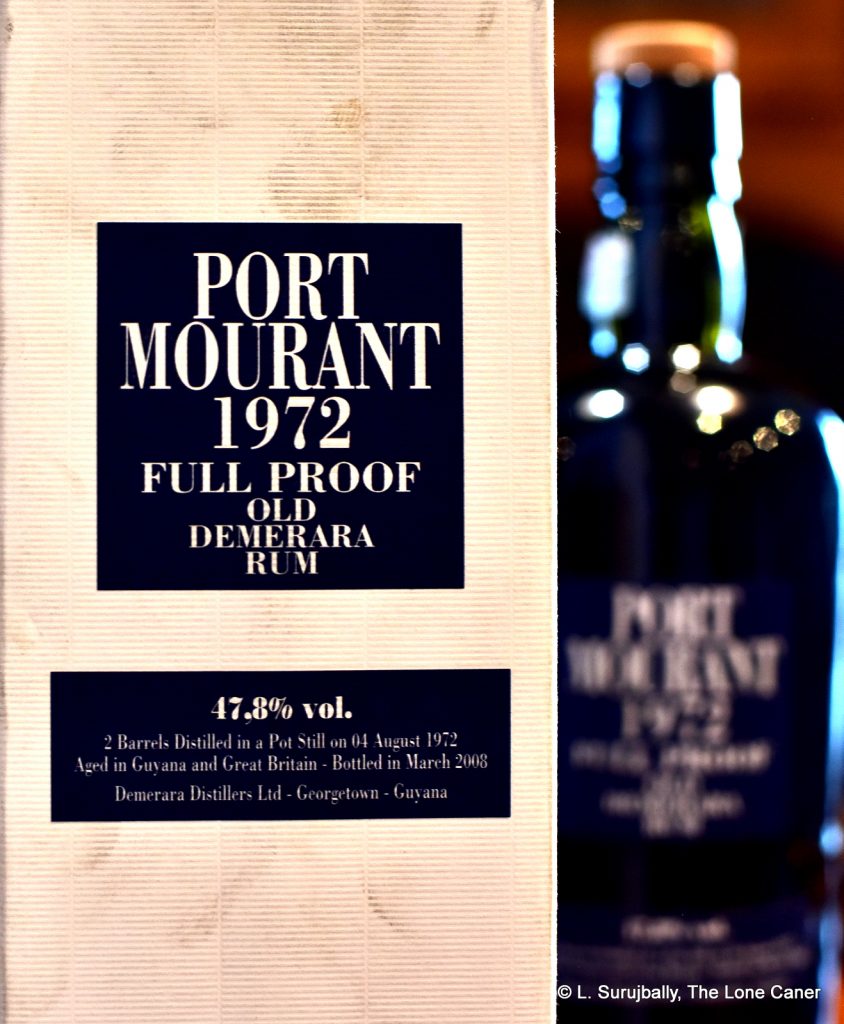 The nose made an immediate and emphatic response: “Here’s how.” I had exasperatedly grumbled
The nose made an immediate and emphatic response: “Here’s how.” I had exasperatedly grumbled 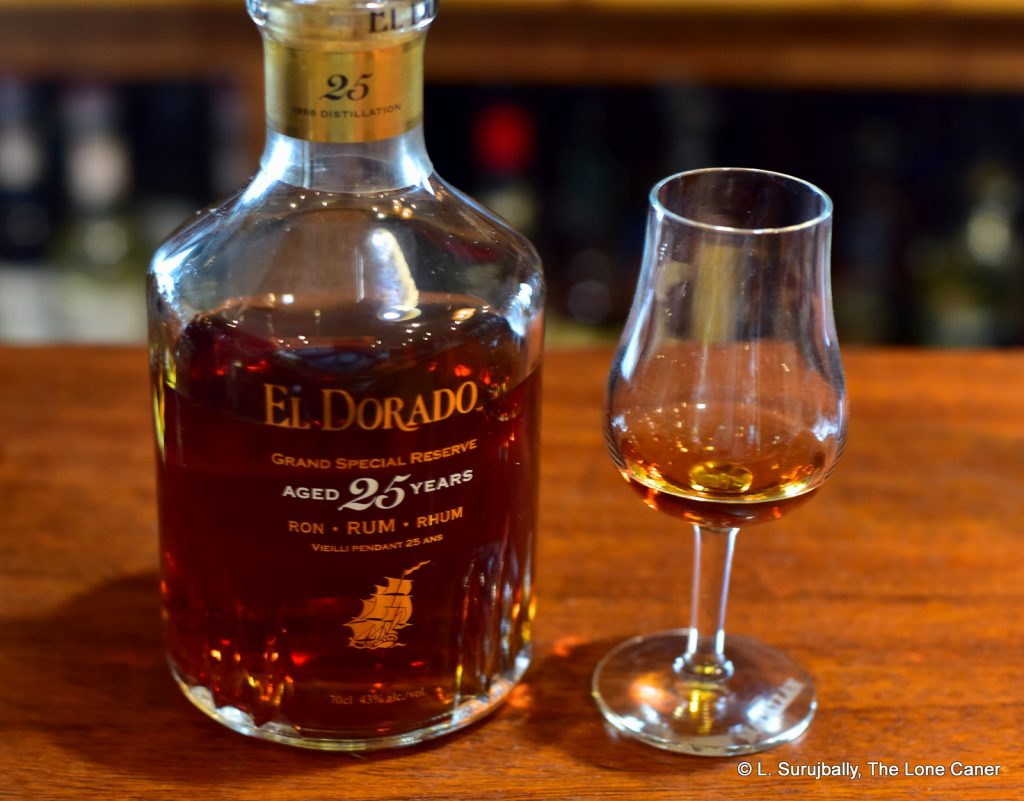
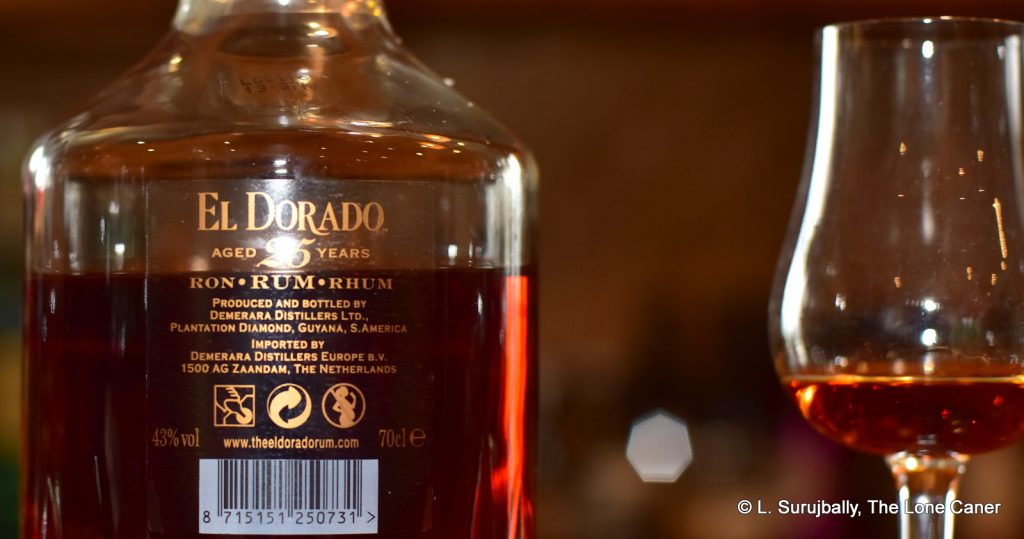
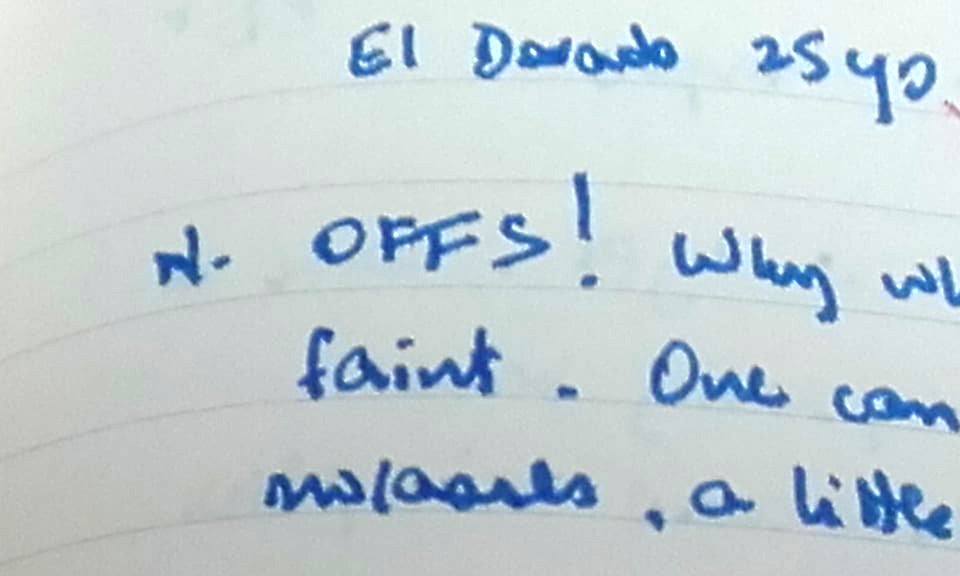

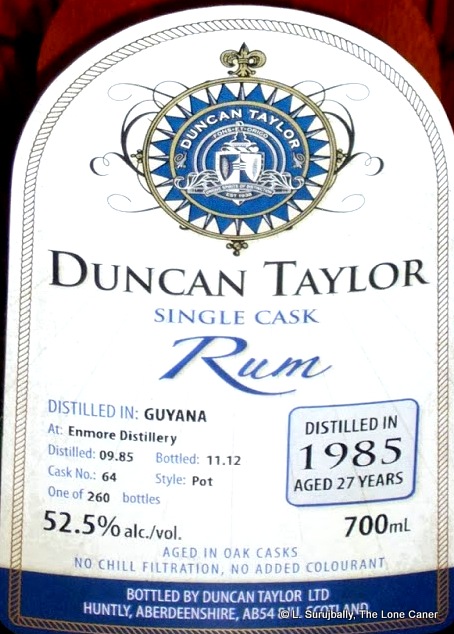 Thinness of the nose aside, the palate took something of a ninety degree left turn. It felt thicker, richer, with the glue and furniture polish notes receding, yet what emerged was a rum that seemed over-oaked, and very dry, very crisp. What fruits there were – and there were some, mostly raisins, pears, unripe apples and green mangoes – were of the mouth puckering kind, quite tart, accompanied by orange peel, nutmeg, cardboard or drywall, and something that reminded me of the dustiness of a drought-stricken backyard. The strength was fine for what it was – not low enough to make it a mild crowd-pleaser, not so strong as to make it an assault on the tongue, so on that level it succeeded just fine. The finish gave up more of those tart fruity sensations, oak notes, some pepper and cooking herbs (thyme and parsley)…yet overall, it somehow failed to cohere really well, and the whole experience was deflated by its relative lack of voluptuousness that either some more ageing or some time in tropical climes might have ameliorated.
Thinness of the nose aside, the palate took something of a ninety degree left turn. It felt thicker, richer, with the glue and furniture polish notes receding, yet what emerged was a rum that seemed over-oaked, and very dry, very crisp. What fruits there were – and there were some, mostly raisins, pears, unripe apples and green mangoes – were of the mouth puckering kind, quite tart, accompanied by orange peel, nutmeg, cardboard or drywall, and something that reminded me of the dustiness of a drought-stricken backyard. The strength was fine for what it was – not low enough to make it a mild crowd-pleaser, not so strong as to make it an assault on the tongue, so on that level it succeeded just fine. The finish gave up more of those tart fruity sensations, oak notes, some pepper and cooking herbs (thyme and parsley)…yet overall, it somehow failed to cohere really well, and the whole experience was deflated by its relative lack of voluptuousness that either some more ageing or some time in tropical climes might have ameliorated.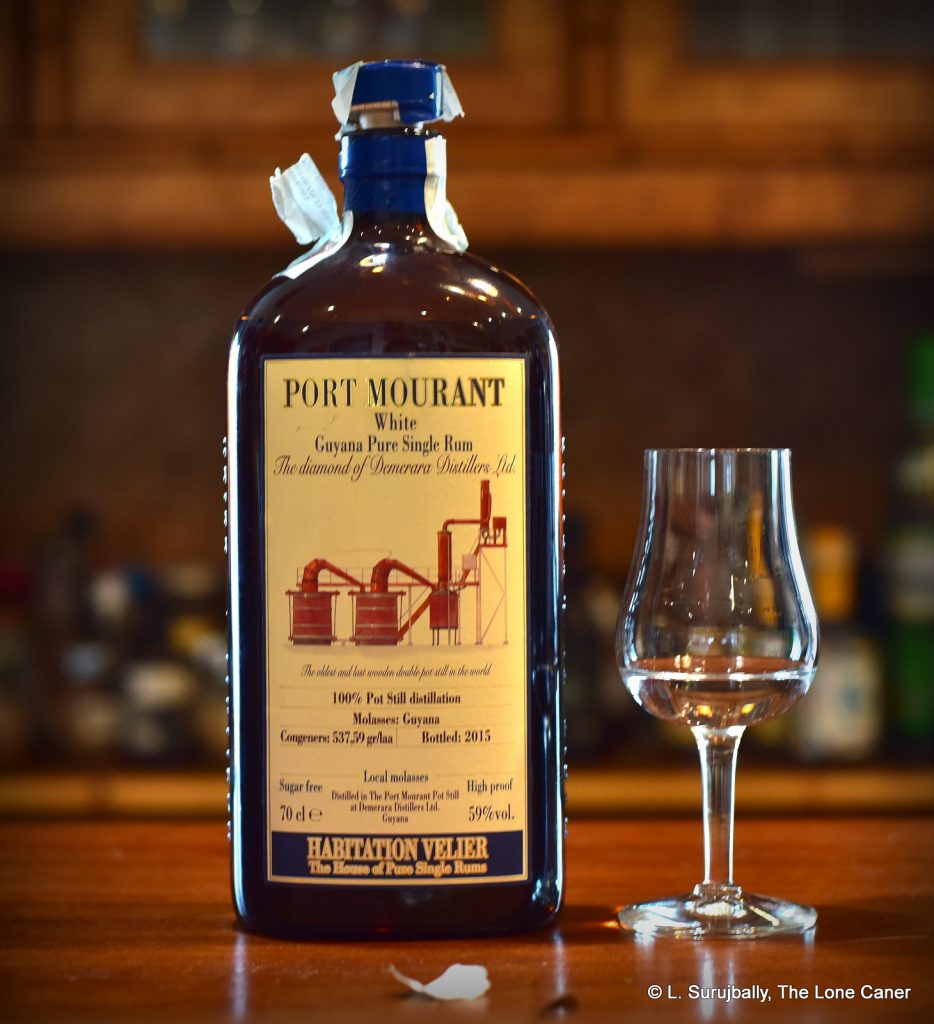
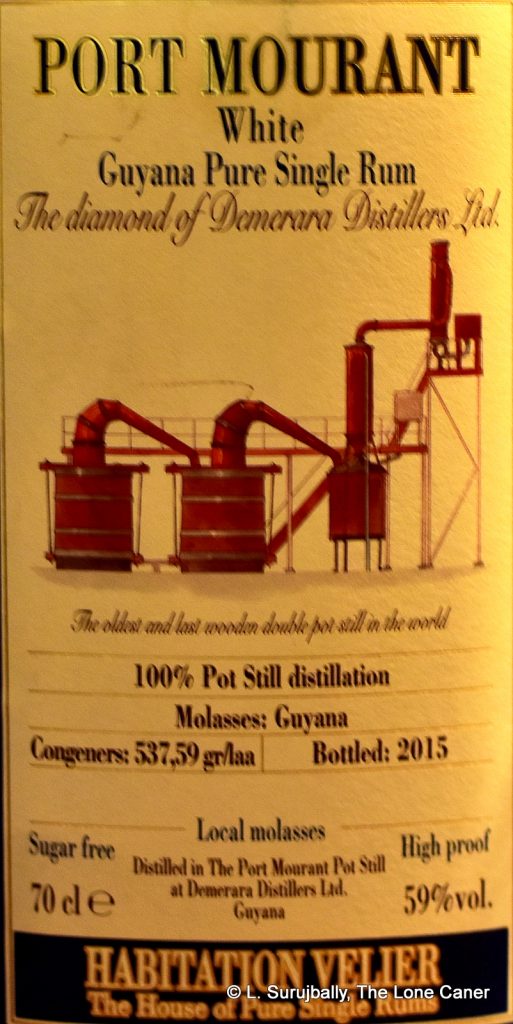 Unaged rums take some getting used to because they are raw from the barrel and therefore the rounding out and mellowing of the profile which ageing imparts, is not a factor. That means all the jagged edges, dirt, warts and everything, remain. Here that was evident after a single sip: it was sharp and fierce, with the licorice notes subsumed into dirtier flavours of salt beef, brine, olives and garlic pork (seriously!). It took some time for other aspects to come forward – gherkins, leather, flowers and varnish – and even then it was not until another half hour had elapsed that crisper acidic notes like unripe apples and thai lime leaves (I get those to buy in the local market), were noticeable. Plus some vanilla – where on earth did that come from? It all led to a long, duty, dry finish that provided yet more: sweet, sugary, sweet-and-salt soy sauce in a clear soup. Damn but this was a heady, complex piece of work. I liked it a lot, really.
Unaged rums take some getting used to because they are raw from the barrel and therefore the rounding out and mellowing of the profile which ageing imparts, is not a factor. That means all the jagged edges, dirt, warts and everything, remain. Here that was evident after a single sip: it was sharp and fierce, with the licorice notes subsumed into dirtier flavours of salt beef, brine, olives and garlic pork (seriously!). It took some time for other aspects to come forward – gherkins, leather, flowers and varnish – and even then it was not until another half hour had elapsed that crisper acidic notes like unripe apples and thai lime leaves (I get those to buy in the local market), were noticeable. Plus some vanilla – where on earth did that come from? It all led to a long, duty, dry finish that provided yet more: sweet, sugary, sweet-and-salt soy sauce in a clear soup. Damn but this was a heady, complex piece of work. I liked it a lot, really.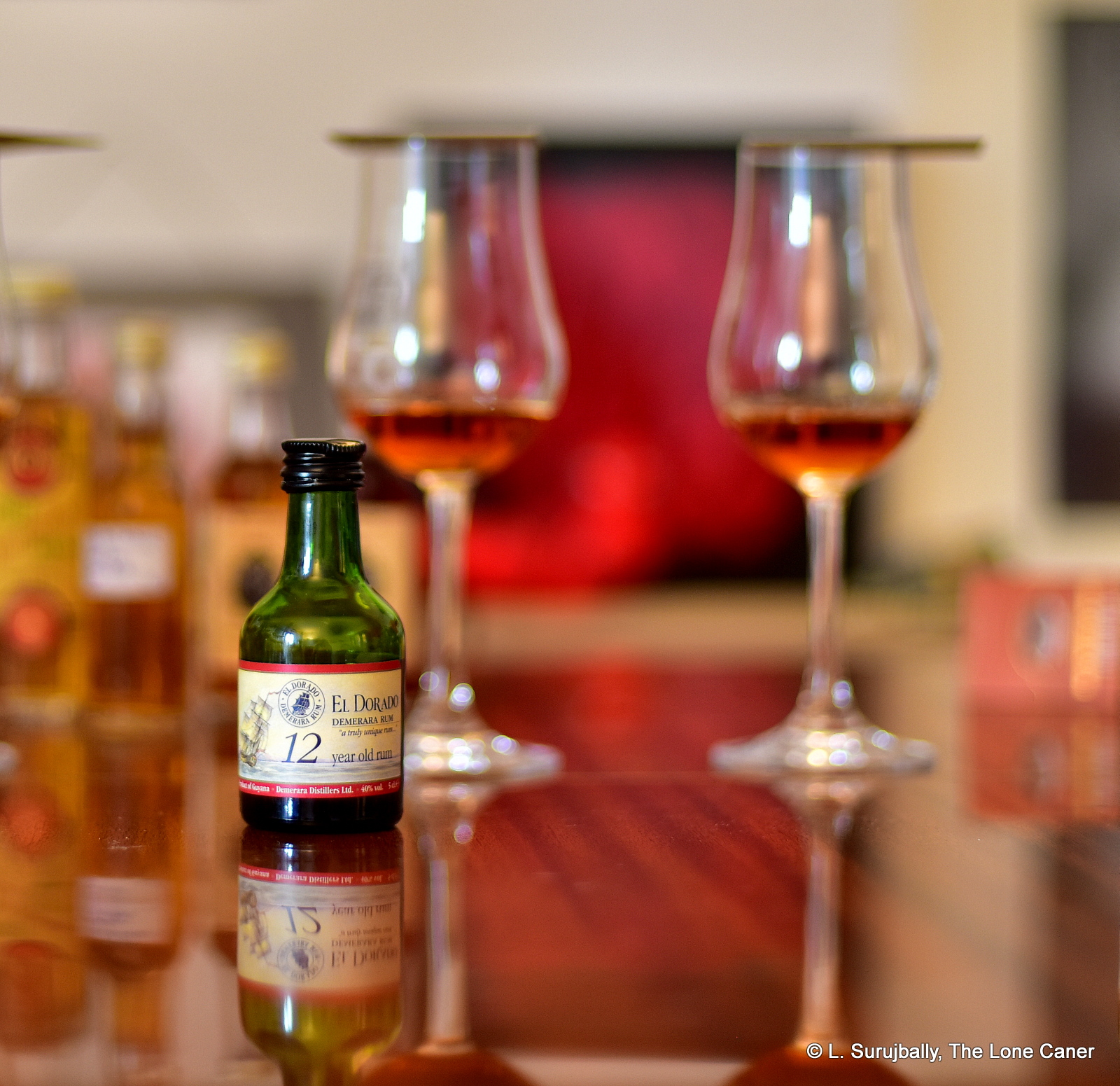
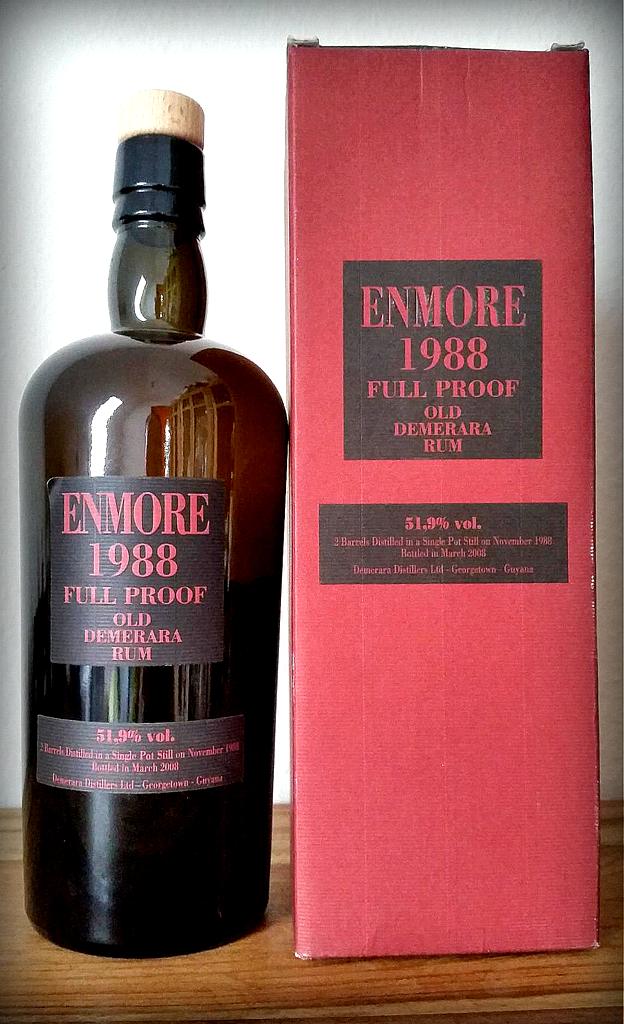
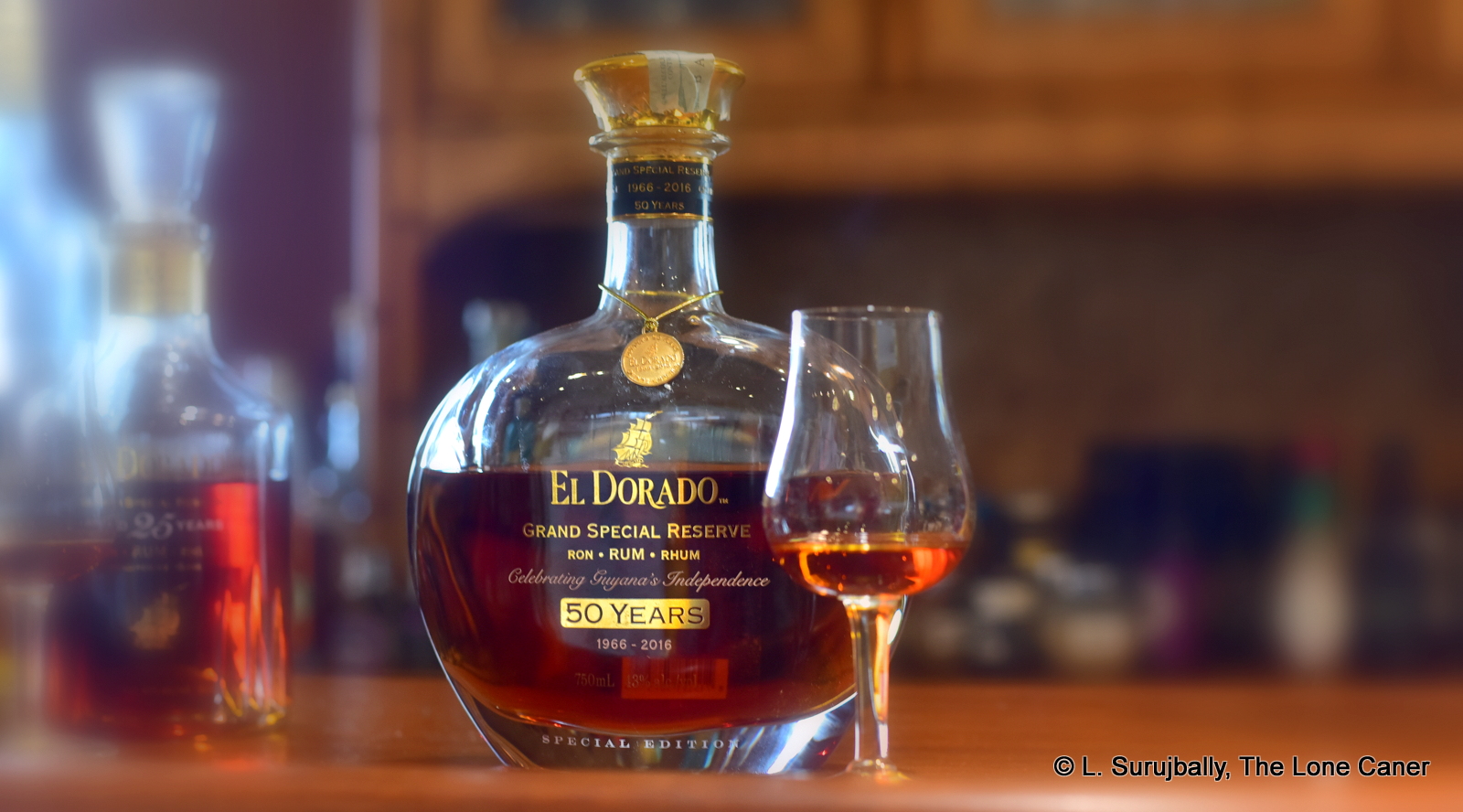
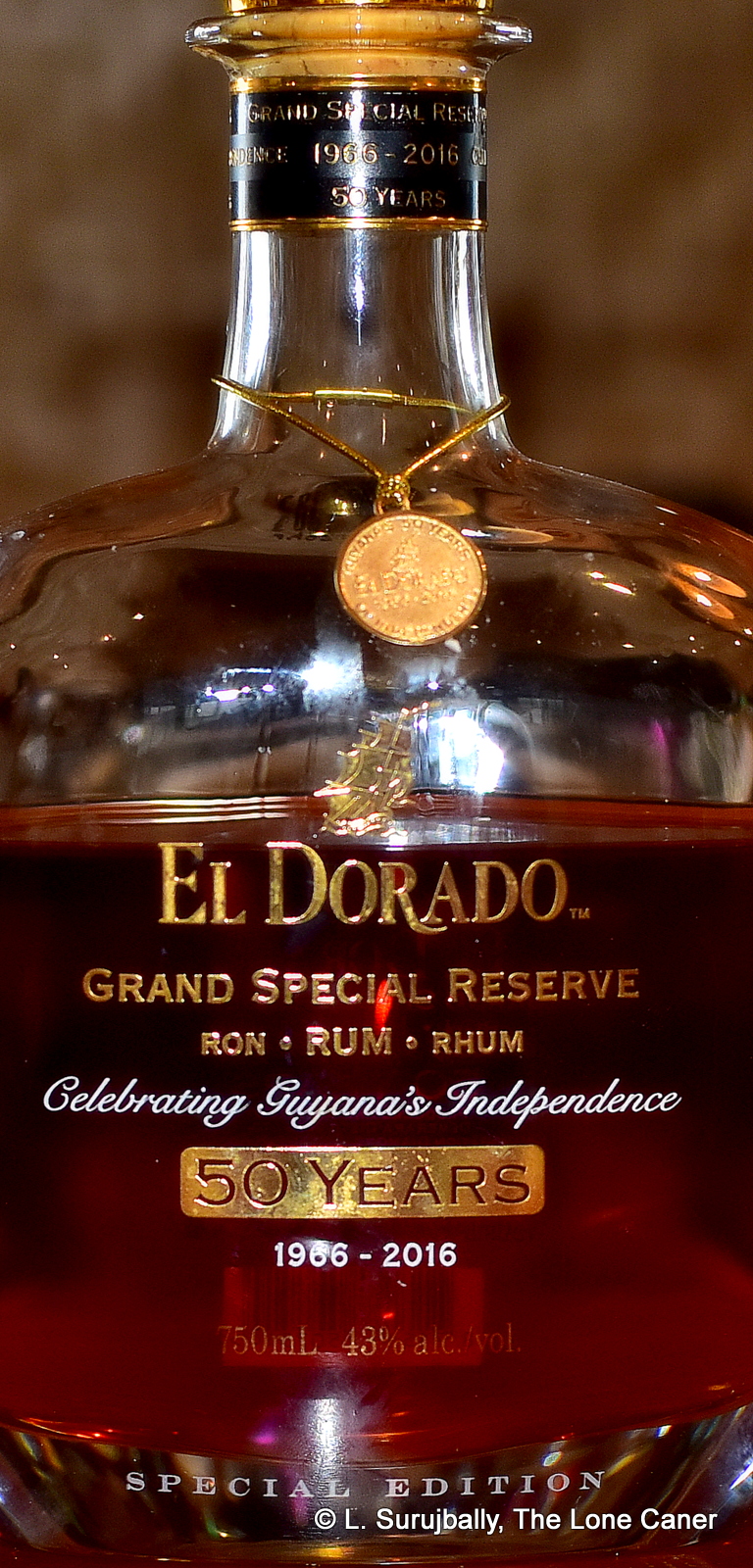 Which brings us to the El Dorado 50th Anniversary offering, with 600 produced bottles selling for a muscular US$3500 or so (each), and bottled at a less beefy 43%, meant to celebrate Guyana’s 50th anniversary of independence in 2016, just as the Appleton 50 did a few years earlier. It is not, as some websites state, a fifty year old rum (the bottle itself notes “50 years” in bold writing which doesn’t help) — by strict definition it is a 33 year old. The Whisky Exchange, which I have no reason to doubt, notes it as being a blend of rums: 65% from 1966, 25% between 1966 and 1976 and another 10% from 1983….so the idea that each of these aged components is from a specific still is likely to be a reasonable assumption (I’ve cobbled together various sources on the parts of the blend in “other notes” below).
Which brings us to the El Dorado 50th Anniversary offering, with 600 produced bottles selling for a muscular US$3500 or so (each), and bottled at a less beefy 43%, meant to celebrate Guyana’s 50th anniversary of independence in 2016, just as the Appleton 50 did a few years earlier. It is not, as some websites state, a fifty year old rum (the bottle itself notes “50 years” in bold writing which doesn’t help) — by strict definition it is a 33 year old. The Whisky Exchange, which I have no reason to doubt, notes it as being a blend of rums: 65% from 1966, 25% between 1966 and 1976 and another 10% from 1983….so the idea that each of these aged components is from a specific still is likely to be a reasonable assumption (I’ve cobbled together various sources on the parts of the blend in “other notes” below).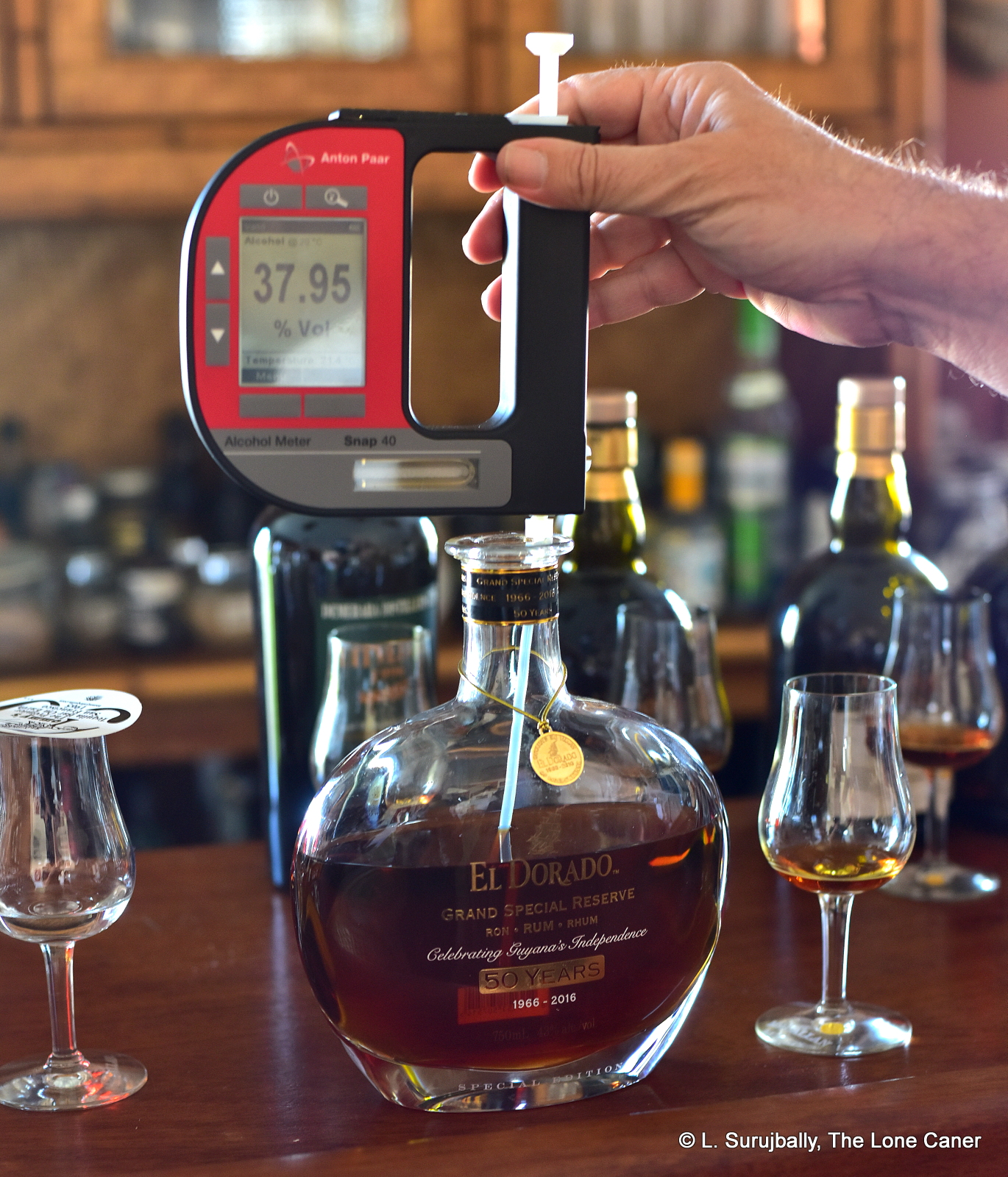
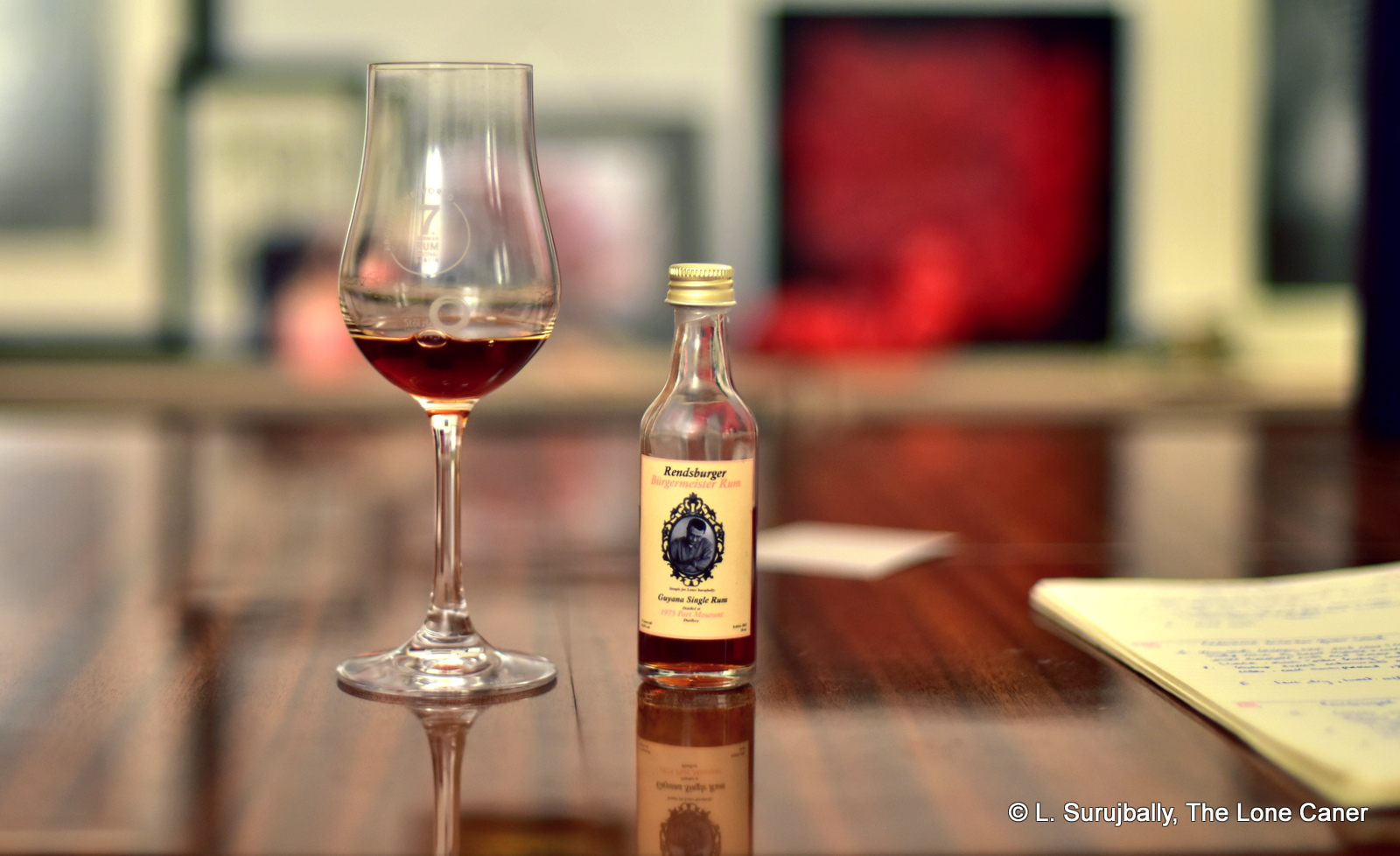
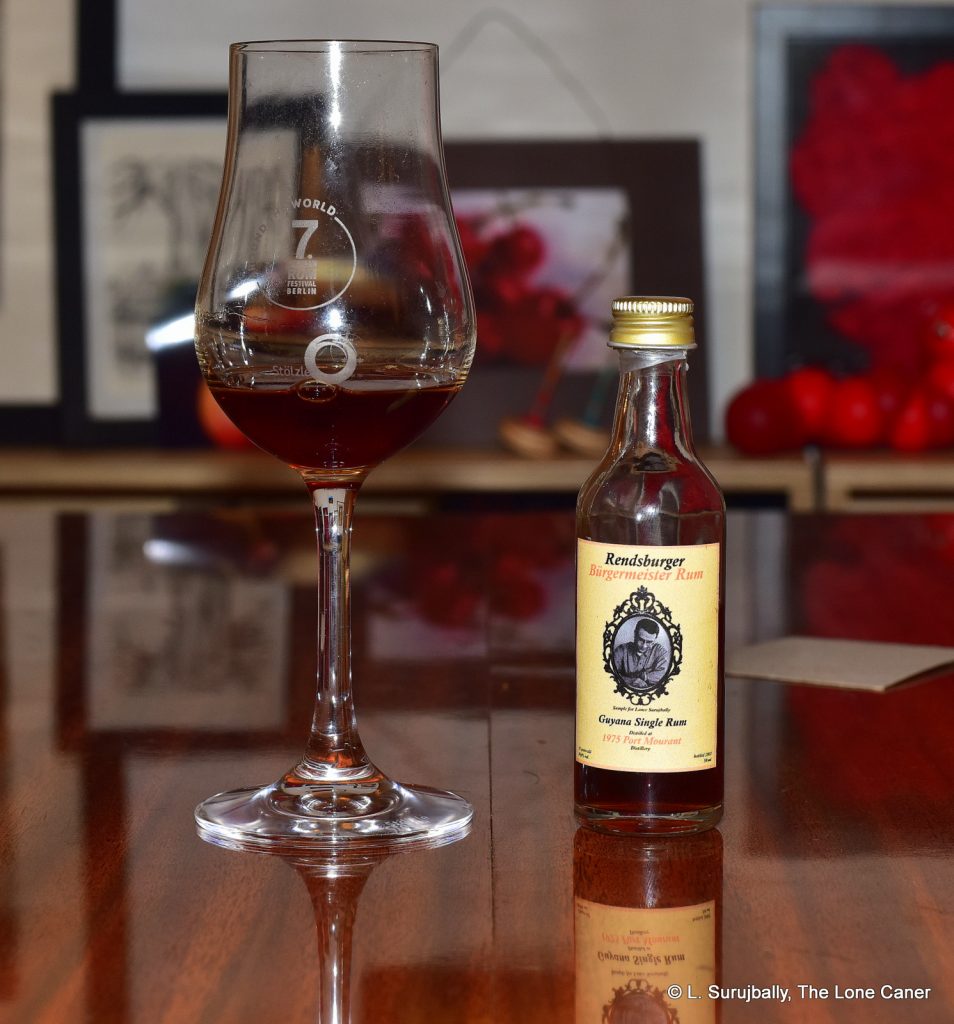 As for the palate, man, I’m in heaven, because I just found another 1975 to add to the pantheon. That same growling, thick richness of the nose segued to the tongue with no pause, no hesitation and no detours. The strength was near perfect – it gave strength without sharpness, allowing all the flavours to march solidly across the stage and present themselves one after the other: licorice, vanilla, caramel, bags of fruits, a little saltiness, biscuits and cereal. The whole thing was warm and thick with dark flavours that never seemed to want to stop showing off and even the oak, which at first I thought started to take on an unhealthy dominance after some minutes (I was actually writing “Mozart just exited the scene and is replaced by Salieri!” before crossing it out), retreated into the background, chilled out, and was (to my relief) content to be a part of the troupe rather than a scene stealing hog. The exemplary and traditional Port Mourant profile finished long, slow, voluptuously and with chocolate, coffee grounds, some oak, vanilla, raisins and anise, and overall, my take was it was simply one of the Grand Old Men of the plantation and the still.
As for the palate, man, I’m in heaven, because I just found another 1975 to add to the pantheon. That same growling, thick richness of the nose segued to the tongue with no pause, no hesitation and no detours. The strength was near perfect – it gave strength without sharpness, allowing all the flavours to march solidly across the stage and present themselves one after the other: licorice, vanilla, caramel, bags of fruits, a little saltiness, biscuits and cereal. The whole thing was warm and thick with dark flavours that never seemed to want to stop showing off and even the oak, which at first I thought started to take on an unhealthy dominance after some minutes (I was actually writing “Mozart just exited the scene and is replaced by Salieri!” before crossing it out), retreated into the background, chilled out, and was (to my relief) content to be a part of the troupe rather than a scene stealing hog. The exemplary and traditional Port Mourant profile finished long, slow, voluptuously and with chocolate, coffee grounds, some oak, vanilla, raisins and anise, and overall, my take was it was simply one of the Grand Old Men of the plantation and the still. 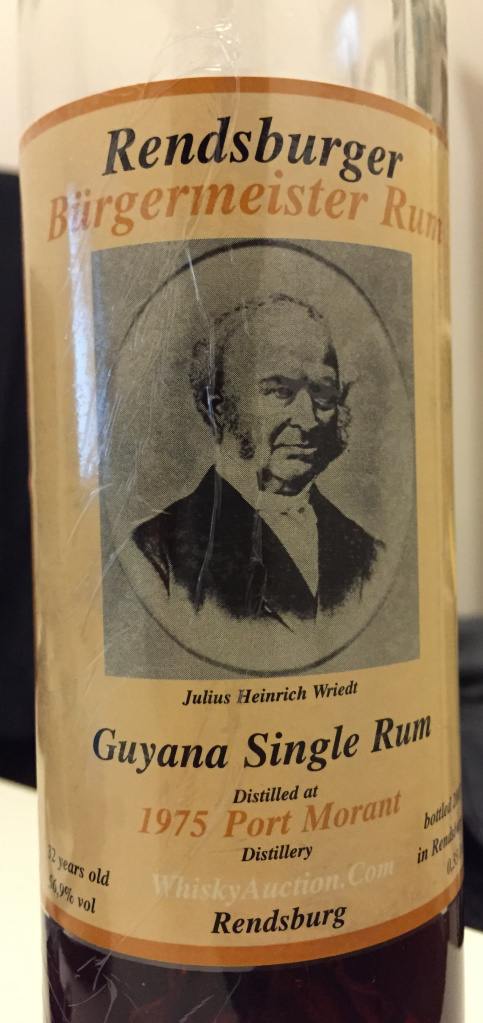
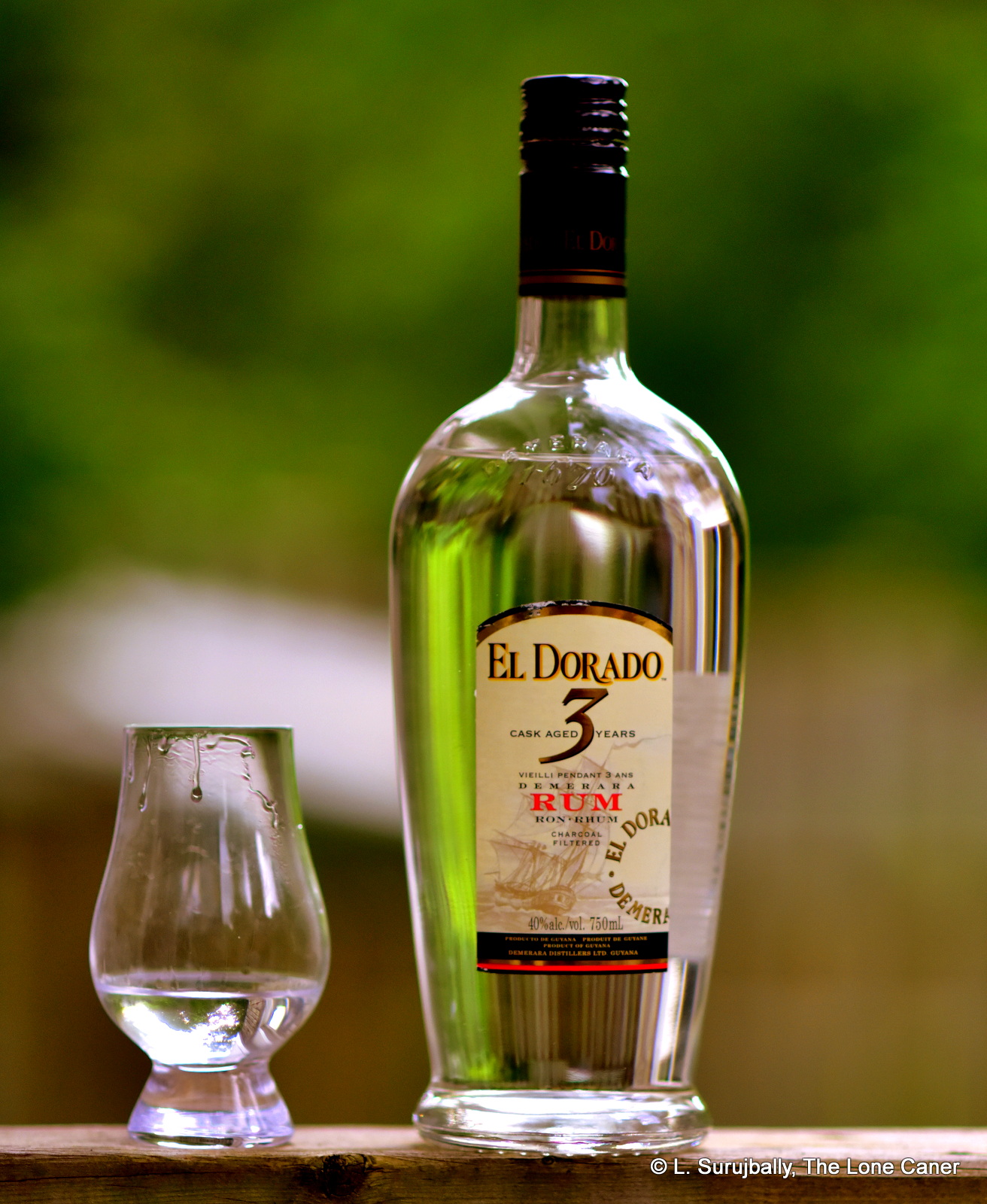
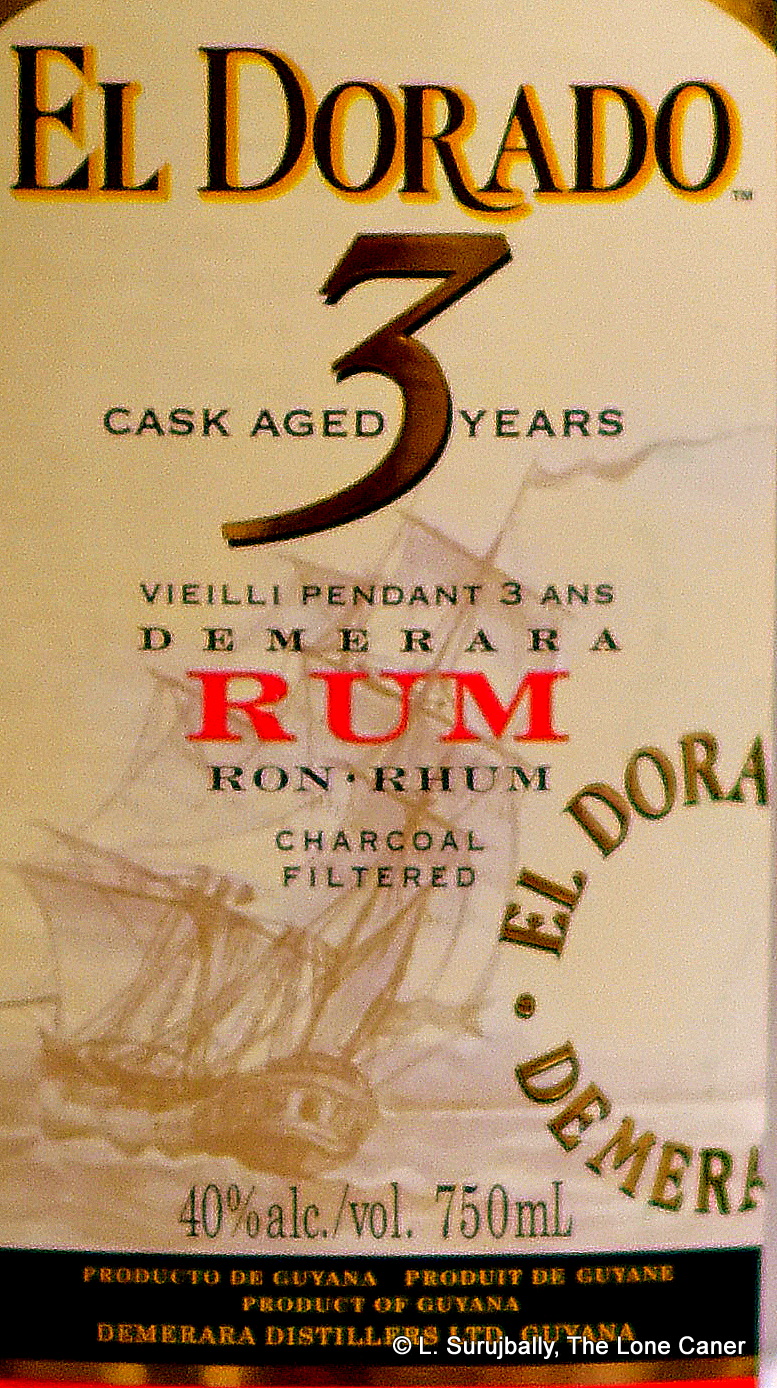 Yeah, 40%. I nearly put the thing back on the shelf just because of that. Just going by comments on FB, there is something of a niche market for well made 45-50% whites which DDL could be colonizing, but it seems that the standard strength rums are their preferred Old Dependables and so they probably don’t want to rock the boat by going higher (yet). I can only shrug, and move on…and it’s a good thing I didn’t ignore the rum, because it presented remarkably well, punching above its weight and dispelling many of my own initial doubts.
Yeah, 40%. I nearly put the thing back on the shelf just because of that. Just going by comments on FB, there is something of a niche market for well made 45-50% whites which DDL could be colonizing, but it seems that the standard strength rums are their preferred Old Dependables and so they probably don’t want to rock the boat by going higher (yet). I can only shrug, and move on…and it’s a good thing I didn’t ignore the rum, because it presented remarkably well, punching above its weight and dispelling many of my own initial doubts.